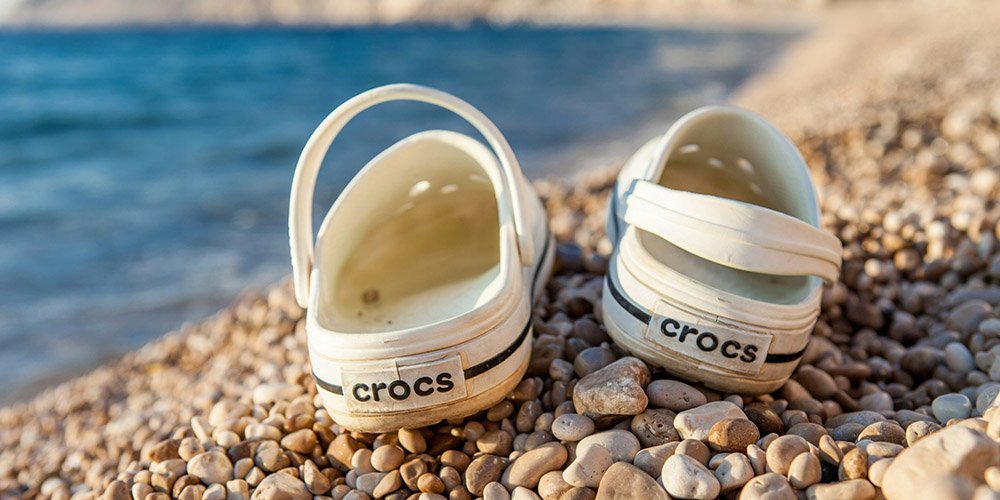Are Crocs Good for Hiking? Discover the Surprising Truth!
Crocs: the foam clogs that have taken the world by storm with their quirky look and comfort. Despite their widespread popularity for casual wear, many outdoor enthusiasts are curious about their effectiveness on hiking trails.
Are Crocs good for hiking adventures, or should they be left at home when you’re planning a trek through the wilderness? Let’s dive into the surprising truths about hiking in Crocs and explore the pros and cons of these controversial shoes.
Are Crocs Good for Hiking Adventures?
When we think of hiking, sturdy boots with thick soles and ankle support usually come to mind. The idea of trading these traditional hiking boots for Crocs may seem laughable to some, but the reality is that many people do consider Crocs for their outdoor adventures. This raises an essential question: are Crocs a genuinely viable option for hiking?
While Crocs have gained a reputation for being comfortable and easy to slip on and off, their suitability for hiking is a topic of debate. Some hikers swear by the convenience and lightweight nature of Crocs, while others are skeptical about their performance on various terrains. Understanding the pros and cons can help determine if Crocs deserve a place on your next hiking trip.
To answer the question of whether Crocs are good for hiking, we need to examine various aspects of the shoe, including their history, design, and performance in different hiking conditions. By exploring these factors, we can get a clearer picture of whether Crocs can hold their own against traditional hiking footwear.
Also read: Are Duck Boots Good for Hiking? Discover the Details!

Crocs: A Brief History and Popularity
Crocs were first introduced in 2002 as a boating shoe. The original design, known as the Classic Clog, featured a distinctive, lightweight foam construction called Croslite. This material provided remarkable comfort and buoyancy, which quickly gained the attention of not just boaters but a wide range of consumers seeking comfortable, casual footwear.
Over time, Crocs have exploded in popularity, extending beyond their initial market to become a global phenomenon. Popular among children, healthcare workers, and everyday people, Crocs have become a go-to for many seeking comfort and ease. The brand’s diverse range of styles and colors has only added to their widespread appeal.
Despite their popularity, the idea of using Crocs for hiking seems unconventional. Their design and material make them well-suited for many environments, but outdoor enthusiasts often question their effectiveness on rugged trails. To make an informed decision, let’s delve into the pros and cons of wearing Crocs on hiking adventures.
Pros of Wearing Crocs on Hiking Trails
One of the most significant advantages of wearing Crocs on hiking trails is their lightweight nature. The foam material makes them incredibly easy to wear, reducing the strain on your feet and legs during long treks. This can be particularly beneficial for hikers who are looking to minimize the weight of their gear.
Another major pro is the breathability of Crocs. The numerous ventilation holes allow for excellent air circulation, which can help keep your feet cool and dry, especially on hot days. This breathability can also prevent blisters and other discomforts often associated with sweaty feet.
Crocs are also known for their easy-to-clean design. If you’re hiking through muddy or wet conditions, simply rinse off the dirt and grime with water, and they’re good as new. This practicality makes Crocs an appealing choice for those who encounter varying conditions on their hiking routes.
Cons You Should Know Before Hiking in Crocs
Despite the advantages, there are several drawbacks to consider before opting for Crocs on your hiking adventures. One of the most notable cons is the lack of ankle support. Unlike traditional hiking boots that offer substantial ankle protection, Crocs leave your ankles exposed, increasing the risk of twists and sprains on uneven terrain.
The open design of Crocs, while great for breathability, also means that debris such as rocks, sticks, and dirt can easily enter the shoe. This can cause discomfort and require frequent stops to remove objects, which can be frustrating during a hike.
Another downside is the overall durability of Crocs in rough, rugged environments. While they perform well on flat, easy trails, more challenging terrains may cause quicker wear and tear, potentially compromising the shoe’s longevity. This makes them less ideal for serious hikers tackling demanding trails.
Also read: Are Doc Martens Good for Hiking? Find Out!

Comfort and Fit: Are Crocs Suitable for Long Hikes?
Comfort is one of the primary selling points of Crocs, and it’s easy to see why. The cushioned foam material provides a plush, comfortable base for your feet, reducing fatigue and making them a favorite for everyday wear. For shorter hikes or casual walks, this comfort can translate well into a pleasant hiking experience.
However, when it comes to long hikes, the fit of Crocs may become an issue. Their loose and open design can lead to your feet sliding around within the shoe, causing blisters or discomfort over time. Additionally, the lack of a secure fit can make steep or uneven terrains more challenging to navigate safely.
While Crocs can be comfortable for short, leisurely hikes, they may not provide the necessary support and stability for longer, more demanding treks. If you’re planning an extended hike, it might be worth considering shoes designed specifically for hiking to ensure maximum comfort and safety.
Durability: Can Crocs Withstand Rough Terrains?
Durability is a critical factor when selecting hiking footwear. Crocs, made from the proprietary Croslite material, are known for their resilience in casual settings. However, the same material may not hold up well under the stresses of rough terrains. Sharp rocks, roots, and other rugged elements can quickly wear down the soles and compromise the overall integrity of the shoe.
While Crocs are durable enough for everyday use and light outdoor activities, their lifespan can be significantly shortened when subjected to the rigors of challenging hiking trails. Hikers who frequently traverse rocky, uneven paths may find that Crocs wear out faster than traditional hiking boots, leading to the need for more frequent replacements.
That said, for hikers who stick to well-maintained, less aggressive trails, Crocs can still offer a decent lifespan. Their durability for casual hikes should not be entirely dismissed, but for those venturing into more extreme environments, a more robust and specialized hiking shoe is likely the better choice.
Traction and Grip: Are Crocs Slip-Resistant?
Traction is a vital component of any hiking shoe, and it’s an area where Crocs fall short compared to traditional hiking boots. While the soles of Crocs do offer some degree of grip, they are not designed with the aggressive tread patterns needed for optimal traction on slippery or uneven surfaces.
When hiking on wet rocks, muddy paths, or steep inclines, the lack of sufficient grip can pose a safety risk. Slipping and sliding can lead to falls and injuries, making Crocs a less reliable option for more challenging hikes. For gentle trails or dry, flat surfaces, the traction of Crocs may suffice, but they are far from ideal for more demanding conditions.
The slip-resistant capabilities of Crocs are adequate for everyday use and light activities but fall short in comparison to shoes designed specifically for hiking. Investing in footwear with superior traction is crucial for maintaining stability and safety on more adventurous trails.
Also read: Are Blundstones Good for Hiking? Discover the Truth!

Breathability: Keeping Your Feet Cool on Hikes
One of the standout features of Crocs is their exceptional breathability. The numerous ventilation holes and open design allow for maximum airflow around your feet, keeping them cool and reducing the buildup of sweat. This can be particularly advantageous during summer hikes or in hot climates where overheating can be a concern.
Breathability not only enhances comfort but also helps prevent common foot issues such as blisters, fungal infections, and odor. The moisture-wicking properties of Crocs’ foam material further contribute to keeping your feet dry and comfortable throughout your hike.
However, the same breathability that makes Crocs appealing in warm weather can be a drawback in colder conditions. The open design offers little insulation, leaving your feet exposed to the elements. For hikes in cooler temperatures, an alternative with better thermal regulation might be necessary to ensure comfort and protection.
Water Resistance: Perfect for Wet and Muddy Trails?
Crocs have a significant advantage when it comes to water resistance. The Croslite material is not only water-resistant but also buoyant, meaning that Crocs will float if they happen to get lost in a river or stream. This makes them an excellent choice for hikes that involve water crossings or wet, muddy trails.
Their easy-to-clean design also means that they can be quickly rinsed off after trudging through mud or puddles, making maintenance a breeze. This water-friendly feature is particularly useful for hikers who frequently encounter wet conditions and need footwear that can keep up without getting damaged.
However, the open design that allows water to enter the shoe can also be a downside. While Crocs dry quickly, having wet feet during a hike can still lead to discomfort and blisters. For short, water-heavy hikes, Crocs might suffice, but for extended periods in wet conditions, a more enclosed, waterproof hiking shoe would likely offer better protection and comfort.
Conclusion: The Verdict on Hiking in Crocs
So, are Crocs good for hiking? The answer isn’t straightforward and largely depends on the type of hiking you plan to do. For short, casual hikes on well-maintained trails, Crocs can offer a comfortable, lightweight, and breathable option that’s easy to clean and water-resistant. They provide ample comfort for leisurely walks and are particularly useful in warm, dry conditions.
However, for more demanding hikes involving rough terrains, steep inclines, and wet or cold environments, Crocs may not be the best choice. The lack of ankle support, limited traction, and potential durability issues make them less suitable for more adventurous or extended hiking trips.
In conclusion, while Crocs can be a fun and convenient choice for certain hiking situations, they are not a one-size-fits-all solution. It’s essential to consider the specific demands of your hiking adventure and choose footwear that will provide the necessary support, protection, and comfort to ensure a safe and enjoyable experience on the trail.








